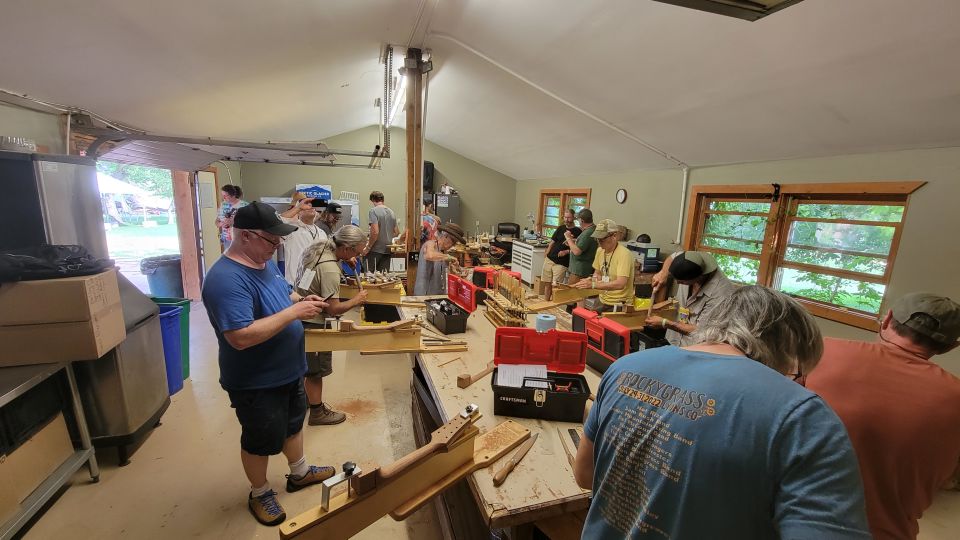Mandolin Building
Mandolin Building
Mandolin Building
Imagine, arriving at Planet Bluegrass eager to assemble your first musical instrument. After meeting your instructors and fellow students, you get to choose a mandolin kit, each one made of beautiful woods, and begin. Four days later, you leave with a mandolin, created mostly with your own hands and partly with the assistance of a group of remarkable luthiers who facilitate this unforgettable building experience in our onsite workshop.
We hope you’re able to join us in 2026 for an experience that you can be proud of every time you pick up your instrument to play knowing that your hands themselves built it.
What to Expect
The mandolin building class is held in our workshop centrally located on the beautiful Planet Bluegrass Ranch.
No woodworking experience required - just a good attitude and focus.
There are 14 mandolin building spots available and students will build their mandolins from a kit designed by master luthier, Marcus Engstrom.
Tuition includes your mandolin kit and expert instruction from luthiers Marcus Engstrom, Dan Roberts, Bobby Wintringham, Brody Klemer, William Classon, and Mark Gibson.



Mandolin Kits

This will be our third year working with new mandolin kits! Luthier Marcus Engstrom has taken over the reigns and retooled the kits and workboards for an entirely new building experience. Marcus has taken the kits and class to the next level.
Flat fingerboards were traditional on mandolins but most modern top level mandolins come with a compound radius fretboard. Even many of the older vintage mandolins are being converted to these fretboards to improve their playability, so we decided to make compound radiused fretboards. The improvement in playability will be remarkable! In addition, the mandolin soundboard design is being retooled to more of an archtop design. By laminating the tops for more radius, we can use parallel tone bars and f holes to get a sound more similar to archtop mandolins. We’ll still glue and voice the tone bars as a class so the voicing process will remain fun and educational. And, the tops should prove a bit more stable long term. We are also considering utilizing an adjustable bridge and cast tailpiece as well as part of the design.
We hope you are as excited about these upgrades as we are!
The Experience
Several years ago, a violist playing in an orchestra in Denver signed up because she wanted to play the mandolin. She spent the first three days intently focused on her instrument insisting that for her the class was all about the instrument she was making. During the last day, as the first mandolins were being strung up and she felt the joy of her fellow students, she turned to Michael and said, “Wow, I got it! It’s about the experience, not the instrument!”
The instrument building experience was born of a simple challenge to California luthier Rick Turner in 1992. Rick called his friend Michael Hornick, maker of Shanti Guitars, and asked if Michael would help design the mandolin. What they came up with was a simple, yet elegant kit patterned after the early Gibson Army/Navy-style models made during World War I. The beauty of the kit was that it incorporated old and new styles of instrument building: the old workboard style of building was combined with the modern techniques of X-bracing and composite materials. The kit has further evolved with a unique sound-port on the side (pointing up) allowing the player to experience a fuller dynamic range.
The experience would eventually lead Peter Rowan over to the workshop each day, following the progress and playing the newly strung instruments, delighting in the unique sound of each. Now, it’s a tradition that many of the Academy instructors drop by to play the newly strung instruments on the last day.